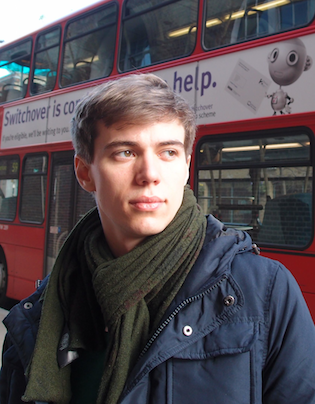
Some weeks ago I announced that I want to rewrite the AL Voice Recorder and publish it as a new app. Once it is published, I want to grow it to generate a revenue of $1000 per month.
For the schedule of the project, have a look at the announcement here.
Paper Prototype
Last week I wrote about the feature list, based on which I made a paper prototype.
I always felt that this should be an iterative process and therefore what I’m showing you today is far from final. Until now I went through two iterations. Let’s take a look at them.
Iteration 1
On the first iteration I tried to squeeze as many of the features identified at the previous post into one screen. The result looked like this:
I was thinking about a list with cards providing a quick overview over the existing recordings. When clicking on the expand button, the interaction buttons would show up and provide the possibilities to share, edit, set the file as ringtone, etc. Once the play button would be pressed, the separator line would serve as a seek bar and a stop button would appear.
 Via the action bar the user would be able to access the settings and send me feedback.
Via the action bar the user would be able to access the settings and send me feedback.
What I didn’t like about this draft was that it
- Did not contain all features,
- Looked too cluttered.
Iteration 2
On the second iteration I tried to highlight the more unique features like search and tags while keeping the design more simple.

I removed the action bar and added a search bar instead.
The bottom navigation lets the user choose between tags, favorites and all recordings. I’m not sure if I want to leave this in the final product but will probably implement it to see how it feels on the device.

I designed the following screen flow. When pressing the floating action button, the user will be taken to the recording screen (1). This screen is nothing special, it offers the possibility to cancel, pause and save the ongoing recording and shows the amplitude using some fancy bar graphs.
The cards offer the most frequently used actions: Share, favorite, more and play. When the user presses more, he will be taken to a detail screen (2), on which the name of the recording and the additional text can be edited, tags can be added or removed, the recording can be set as ringtone, and so on. I’m not quite satisfied with this screen at the moment and will alter it some more at a later time.
When the play-button is pressed, the bottom navigation is exchanged with an audio player (3).
Via the hamburger button, the nav bar is opened (4). It gives an overview over the tags and provides access to smaller features and the settings (5).
Conclusion
This is the current state. So far there have been two iterations, many more will come.
As I said above, I’m not quite satisfied with some areas of the design yet. Therefore I’m curious about your thoughts and ideas on how I can improve my design some more! Please share them in the comments.
 Johannes is the co-founder of
Johannes is the co-founder of 
2016/06/17 at 14:15
Good Design study. Will be delighted to have a test version in hand.
2016/06/20 at 08:21
Thanks Alex.
I’m looking forward to it too.
2016/11/13 at 00:59
I’ve read your 1000$ challenge articles. I’ve finished reading this last one and was curios about what happened next!?
Interesting blog. I hope you didn’t give up.
2016/11/13 at 02:21
Hey Alexandru,
thank you for your comment.
I moved to Japan and got married (twice), which took more time than I thought. The process of this challenge had some twist as well. But there’ll be new articles soon.
Best regards,
Johannes